
Mar 3, 2024 | Side hustle ideas, Small Business Ideas
Welcome to the dynamic world of videography, where creativity meets opportunity!
In today’s visually-driven society, the demand for captivating video content is skyrocketing.
Whether you’re an aspiring videographer or already have some experience behind the lens, this comprehensive guide will take you on a detailed journey of how to turn your passion for videography into a profitable and fulfilling career.
Start by Building Your Portfolio
Your portfolio is your calling card in the videography world.
It’s where you showcase your unique skills, style, and storytelling abilities.
Here’s a closer look at how to craft an impressive portfolio:
- Diversity Matters: Capture a range of projects, from personal passion projects to events in your local community. This diversity demonstrates your versatility and adaptability.
- Quality Over Quantity – Focus on producing high-quality footage that tells a compelling story. Pay attention to the technical aspects of videography, such as framing, composition, lighting, and sound.
- Embrace Storytelling – Remember that videography is about more than just pretty visuals; it’s about weaving a narrative that engages and emotionally resonates with viewers.
- Client Projects – As you start working with clients, ask for their permission to include your collaborations in your portfolio. Positive client experiences and testimonials can boost your credibility.
Approach Businesses and Offer Your Services
Prospecting for clients is the next crucial step in monetizing your videography skills.
Here’s a more detailed approach:
Market ResearchI
identify local businesses, marketing agencies, and organizations that can benefit from your videography services. Research their current marketing strategies and pinpoint areas where video can make a difference.
Compelling Pitch
Craft persuasive pitches that clearly communicate the unique value you bring to the table. Emphasize how your expertise can help them achieve their marketing goals, whether it’s boosting brand awareness, increasing engagement, or driving conversions.
Flexible Pricing Models:
Tailor your pricing to cater to various budgets and project sizes. Offering both hourly rates for smaller assignments and project-based fees for larger projects can attract a wider range of clients. Be transparent about pricing and what’s included in your services.
Advertise Your Services Online
In today’s digital age, your online presence is your storefront.
Here’s a closer look at effective online marketing strategies:
Professional Website:
Invest in a well-designed, user-friendly website that serves as your online hub. Your website should prominently showcase your portfolio, provide clear contact information, and include client testimonials to establish credibility.
Social Media Engagement
Leverage popular social media platforms like Instagram, YouTube, and LinkedIn to promote your videography business.
Consistently share your work, engage with your audience, and explore collaborations with influencers to expand your reach.
SEO Optimization
Optimize your website and online content for search engines.
Use relevant keywords, meta descriptions, and alt tags to improve your online visibility.
Local SEO strategies can also help you rank higher in local search results.
Join Professional Organizations
Professional associations offer valuable resources and networking opportunities.
Here’s a more detailed look at how to maximize your membership:
Networking:
Attend industry-specific events, workshops, and forums offered by professional organizations.
These gatherings provide excellent opportunities to connect with fellow videographers, potential clients, and equipment manufacturers.
Continuous Learning:
Take full advantage of the educational resources provided by these organizations.
Attend seminars, webinars, and training sessions to stay updated on industry trends and best practices.
Certifications
Some associations offer certifications, which can enhance your credibility and signal your commitment to professional development.
Attend Trade Shows and Conventions
Participating in industry events can be a game-changer for your videography career.
Here’s how to make the most of these opportunities
Networking Opportunities
Trade shows and conventions are ideal for building connections.
Attendees often include industry professionals, potential clients, and representatives from equipment manufacturers.
It’s a prime opportunity for building relationships.
Exposure to Technology
These events provide insights into the latest technology, trends, and techniques in the videography industry.
You can explore new equipment and software that may improve the quality and efficiency of your work.
Stay Up to Date with Technology and Trends
Remaining current with technological advancements and industry trends is crucial for success.
Here’s how to stay in the know
- Subscribe to Industry Resources
Follow blogs, forums, and industry publications that focus on videography.
These sources often provide insights into emerging trends and technologies.
Attend workshops, seminars, or online courses to enhance your skills and knowledge.
Consider courses on new equipment and software as well as courses on storytelling and editing techniques.
Join online communities or forums where videographers share their experiences and insights.
Engaging with peers can help you learn from their successes and challenges.
Tips and Tricks for Success
Here are some additional tips to excel as a videographer:
- Establish a Strong Brand Identity: Create a unique style and identity that sets you apart from competitors. Your brand should be reflected in your work, logo, and marketing materials.
- Niche Specialization: Consider specializing in a specific niche, such as wedding videography, real estate videos, or corporate promotions. Specialization can make you more attractive to clients seeking expertise in a particular area.
- Offer Free or Discounted Services Initially: To build your portfolio and gain exposure, consider offering your services for free or at a discounted rate to select clients. This can lead to valuable testimonials and referrals.
- Community Involvement: Volunteer your videography services for local events or charitable organizations. Not only is this a way to give back, but it can also help you network, gain exposure, and build relationships with potential clients.
- Collaborate with Others:Explore partnerships with local businesses, such as photographers, event planners, or marketing agencies. Collaborations can lead to mutually beneficial projects and referrals.
- Continuous Marketing:Consistently market your services through various channels, including social media, your website, and industry-specific platforms. Regular marketing efforts help attract new clients and keep you top-of-mind in a competitive market.
Need for a Website
Your website is your digital storefront, and it plays a critical role in showcasing your skills and attracting potential clients.
Here’s how to make the most of your website:
Aesthetics and User Experience:Ensure that your website is visually appealing and easy to navigate. A clean, professional design creates a positive first impression.
Portfolio Showcase: Your portfolio should be prominently featured, displaying your best work. Consider categorizing your projects to make it easy for visitors to find examples relevant to their needs.
Contact Information: Make it effortless for visitors to get in touch with you. Include a contact form, phone number, and email address. Consider adding a “Book Now” button for immediate inquiries.
Testimonials and Reviews:Incorporate client testimonials and reviews to build trust and credibility. If possible, include video testimonials to showcase the impact of your work.
Ready to take your Videography in to new heights online?
Contact us today, and let’s brew up a captivating website that captures the essence of your videography and attracts potential clients from all around!
To kickstart your videography’s online journey, here’s a list of themes that are perfect for your websites:
Congratulations, You’ve embarked on a journey to turn your passion for videography into a successful career!
Making money as a videographer requires dedication, creativity, and a strategic approach.
By following this comprehensive step-by-step guide, you’re equipped with the knowledge and strategies to establish a thriving videography business.
Remember, building a diverse portfolio, prospecting for clients, and effectively marketing your services are key starting points.
As you progress, engage with professional organizations, attend industry events, and stay updated with the latest trends and technology.
With passion, persistence, and a commitment to delivering outstanding work, you can transform your passion for videography into a fulfilling and profitable profession.
Capture moments, tell stories, and shine in the exciting world of videography!
Modern Videographer WordPress Theme
Rekam | A Modern Videographer WordPress Theme

Inview – Fullscreen Photography Videographer Theme

Videographer – Video Production WordPress Theme

VidoRev – Video WordPress Theme
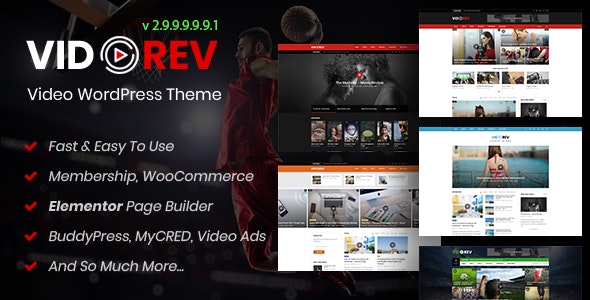

Mar 3, 2024 | Small Business Ideas
In recent years, the interest in eco-friendly transportation options has been on the rise.
More and more people are embracing the idea of leaving their cars behind and exploring the outdoors on two wheels.
This growing trend presents a golden opportunity for entrepreneurs: starting a bicycle rental business.
Not only is it a great way to promote eco-consciousness, but it can also be a profitable venture.
However, success in this competitive market doesn’t come easy. To stand out and thrive, it’s crucial to have a well-thought-out plan and a customer-centered approach.
Identifying and Evaluating Business Opportunities
Before you jump headfirst into the world of bicycle rentals, you need to do your homework. Here’s how:
Conduct Market Research
Begin by conducting thorough market research.
This will help you understand if there’s a demand for a bicycle rental business in your chosen area.
Explore the local biking culture, find out if there are existing rental services, and gather data on tourist attractions and popular cycling routes.
Knowing your market is the first step to success.
For instance, if you’re in a tourist-heavy area with beautiful scenic routes, consider offering guided tours in addition to standard bike rentals.
This can attract tourists looking for a memorable experience.
Analyze Your Audience, Competition, and Challenges
Know your potential customers like the back of your hand.
Are they tourists, locals, or both?
What kind of bikes are they looking for, and what price range are they comfortable with?
Research your competition to see what they offer and at what prices. Additionally, be prepared for challenges such as bad weather or seasonal fluctuations that may affect your business.
Let’s say you’re targeting a college town.
Consider offering student discounts or long-term rental options to attract local students who may want to use bikes for their daily commute.
Develop a Comprehensive Business Plan
Now that you have a good grasp of your market, it’s time to create a solid business plan.
Outline your mission, vision, and long-term goals. Don’t forget to include financial projections, startup costs, and a timeline for growth.
A clear plan will serve as your roadmap to success.
Your business plan should also include contingency plans for unexpected challenges, such as the impact of a pandemic, which could affect tourism or lead to temporary closures.
Setting Up Your Bicycle Rental Business
With your plan in hand, it’s time to set up shop. Here’s what you need to do:
Choose the Ideal Location
Location is key.
Consider high-traffic areas, proximity to bike paths, and parking availability.
Ensure that you comply with zoning and permit requirements to avoid legal hiccups down the road.
If your rental business is near a popular park or trail, consider setting up a kiosk right on the path.
Convenience can be a major selling point.
Acquire Necessary Equipment
Invest in good-quality bicycles, safety gear, and maintenance tools.
Choose a variety of bike models to cater to different preferences.
Regular maintenance is essential to ensure safety and satisfaction.
Consider offering a range of bike sizes to accommodate riders of all ages and abilities.
From child-sized bikes to electric bikes for longer journeys, diversity in your fleet can attract a wider customer base.
Get the Right Permits, Licenses, and Insurance
Navigate the legal aspects of starting a rental business diligently.
Make sure you have the necessary permits and licenses.
Equally important is liability insurance to protect your business from unforeseen circumstances.
Insurance should cover not only accidents but also theft or damage to your rental bikes. Accidents and theft can happen, so being prepared is crucial.
Creating an Online Presence
In today’s digital age, having an online presence is essential for reaching a broader audience.
Building a website for your bicycle rental business can be a game-changer. If you’re not tech-savvy, don’t worry – we offer website creation services tailored to your business needs.
Here are some matching themes you can use for your website.
Your website can serve as a central hub for your business.
You can display your fleet of bikes with detailed descriptions and high-quality photos.
Include information on pricing, rental policies, and safety guidelines.
Additionally, you can integrate an online booking system, allowing customers to reserve bikes in advance.
This not only enhances convenience but also helps manage rental schedules efficiently.
Promote your website through social media channels, local directories, and search engine optimization (SEO) to ensure that potential customers can easily find you online.
Marketing and Promotion
Now that your business is set up, it’s time to get the word out. Here’s how:
Develop a Brand Identity
Create a memorable business name and logo. Branding builds trust and recognition. Ensure that your brand reflects the spirit of outdoor adventure and eco-friendliness.
Your branding should convey the excitement and freedom of cycling. Consider using vibrant colors and imagery that showcase the beauty of the outdoors.
Implement a Multi-Channel Marketing Strategy
Set up an easy-to-navigate website and establish a presence on social media platforms.
Local advertising and partnerships with nearby businesses can also be powerful tools in your marketing arsenal.
Consider offering online booking and payment options on your website for added convenience.
Showcase your bikes and services through high-quality images and engaging content on social media.
Offer Promotions and Discounts
Attract customers with enticing deals, discounts, and referral programs.
Word-of-mouth referrals and customer loyalty can be invaluable in growing your business.
For example, offer a discount for customers who refer friends or family.
This not only incentivizes word-of-mouth marketing but also rewards loyal customers.
Operations and Customer Service
Running a smooth operation and providing excellent customer service are essential for success:
Establish Efficient Rental Procedures
Simplify the rental process with online booking systems. Provide clear rental agreements and terms for transparency.
Consider implementing a user-friendly mobile app that allows customers to rent bikes, view routes, and access safety tips on the go.
Prioritize Maintenance and Safety
Regularly maintain and inspect your bicycles to ensure they’re in top condition.
Safety checks before each rental are a must to guarantee customer satisfaction.
Have a dedicated maintenance schedule and keep thorough records of bike maintenance. This not only ensures safety but also prolongs the life of your rental fleet.
Deliver Exceptional Customer Service
Go above and beyond to make your customers happy.
Offer personalized recommendations, flexible rental options, and prompt issue resolution.
Outstanding service builds a stellar reputation.
Train your staff to be knowledgeable about local routes, biking tips, and safety measures.
This expertise will impress customers and enhance their experience.
Maximizing Profitability
To keep your business sustainable, you’ll need to maximize profitability:
Offer a Diverse Range of Bicycles
Provide a variety of bike types, sizes, and accessories to cater to different customer preferences.
Consider upselling premium bikes or accessories for extra revenue.
Include a range of bike models, from standard city bikes to mountain bikes and e-bikes.
Additionally, offer add-on options such as child seats or bike trailers for families.
Implement Smart Pricing Strategies
Balance profitability with competitive rates. Use dynamic pricing during peak seasons and adjust prices based on demand.
It’s all about finding the sweet spot.
Offer hourly, daily, and weekly rental options to accommodate various customer needs.
Discounts for longer rentals can incentivize customers to explore the area for extended periods.
Explore Additional Revenue Streams
Think beyond bike rentals.
Consider offering guided tours, selling accessories, or partnering with local businesses. Diversifying your income sources can lead to higher profits.
Partner with nearby cafes or restaurants to offer exclusive discounts for your customers, creating a win-win situation for both businesses.
Overcoming Challenges and Mitigating Risks
Running a bicycle rental business isn’t without its challenges. Here’s how to navigate them:
- Address Potential Challenges
Prepare for seasonal fluctuations, the risk of theft, or damage to equipment.
Have strategies in place for managing off-peak seasons and maintaining cash flow.
In regions with distinct seasons, consider offering winter services, such as cross-country skiing or snowshoe rentals, to generate income year-round.
Invest in comprehensive insurance coverage and security measures.
This includes bike locks, surveillance, and tracking systems to protect your assets.
Install high-quality security cameras and alarm systems at your rental location.
This not only deters theft but also provides peace of mind to your customers.
In summary, starting a successful bicycle rental business can be a rewarding endeavor both financially and environmentally.
By following the steps outlined in this article and keeping your customers’ needs at the forefront, you can carve out a niche in this growing market.
Remember, adaptability and continuous improvement are key to long-term success.
So, don’t wait;
start your journey toward owning a thriving bicycle rental business today.
Your eco-conscious customers are ready to ride!
If you need assistance with creating your business website, we are here to help.
Contact us today to get started on your online journey.
Modern WordPress Themes for Your Bicycle Rental Business
Yokoo – Bike Shop & Bicycle Rental WordPress Theme
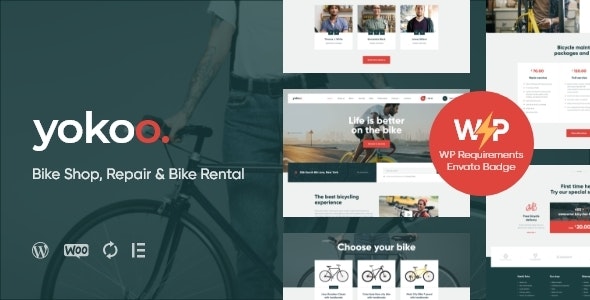
ProBike – Bike Shop & Bicycle Rental WordPress Theme
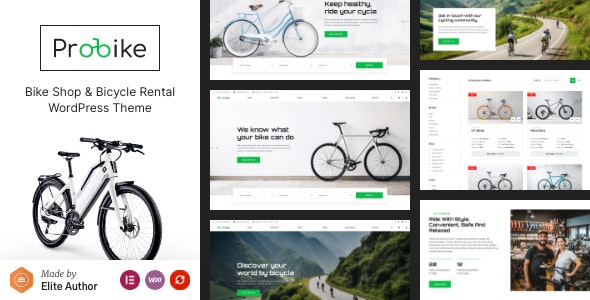
Renroll – Scooter & Bike Rentals Theme


Mar 3, 2024 | Small Business Ideas
Hello, dear health enthusiasts and aspiring nutrition business owners!
If you’re interested in finding ways to make money in the nutrition industry and want to stand out from the competition, you’ve landed in the perfect spot.
Welcome to this comprehensive guide! We’re excited to explore the power of having a website and how it can help you take your nutrition business to new heights.
So, let’s dive in together!
Various Nutrition Services: Providing What Your Customers Desire
As a nutritionist, you have a wide range of valuable services to offer!
Let’s dive into each of these services and see how they can assist you in attracting clients and meeting their unique health requirements.
Customized Meal Plans
One of the awesome services you can provide is creating personalized meal plans!
We take into consideration your unique health goals, dietary restrictions, and personal preferences.
Clients absolutely love the personalized approach we provide, and the amazing results we achieve truly speak for themselves.
Showcase the inspiring success stories and testimonials from clients who have achieved incredible results with our personalized meal plans.
Dietary Consultations
Dietary consultations are personalized, one-on-one sessions with a nutrition expert aimed at helping individuals make informed and sustainable dietary choices.
During these consultations, clients discuss their unique health goals, dietary preferences, and any specific challenges they face.
The nutritionist or dietitian provides expert guidance, creates tailored meal plans, and offers practical advice to improve the client’s overall diet.
These consultations are instrumental in identifying and addressing specific nutritional needs, whether it’s weight management, dietary restrictions, or enhancing overall well-being.
Through dietary consultations, clients gain valuable insights, develop healthier eating habits, and receive ongoing support on their journey to better health.
These sessions play a vital role in empowering individuals to make positive dietary changes that align with their personal goals and preferences.
Weight Management Programs: Help Others Achieve Their Health Goals
Weight management programs are your ticket to a thriving nutrition business.
These programs are like your secret sauce for helping people achieve their ideal weight while staying healthy.
Here’s how you can use them to make money and build your reputation:
- Personalized Plans: Create customized weight management plans for your clients. Tailor them to individual needs, considering factors like age, current weight, and health objectives. Show potential clients how these personalized plans lead to successful and sustainable results.
- Nutrition Guidance: Emphasize the importance of balanced nutrition in your programs. Explain how your meal plans promote healthier eating habits, portion control, and calorie management. Showcase success stories that demonstrate the effectiveness of your dietary guidance.
- Exercise Regimens: Offer exercise recommendations that suit your clients’ fitness levels and preferences. Highlight how physical activity complements a healthy diet and contributes to weight management. Consider hosting fitness classes or providing workout guides for an additional income stream.
- Behavior Modification: Stress the significance of behavior change in weight management. Share strategies to tackle emotional eating, stress-related habits, and self-monitoring. Offer coaching sessions or resources that guide clients through these behavioral changes.
- Ongoing Support: Provide continuous support to clients on their weight management journey. Offer packages that include regular check-ins, group sessions, or access to an exclusive online community. These ongoing services can generate steady income and foster client loyalty.
- Progress Tracking: Implement tools for monitoring and tracking progress. Create apps or software that help clients record their weight, meals, and exercise routines. Offer these tools as part of your program or as standalone products.
Weight management programs can be a lucrative aspect of your nutrition business. By showcasing the benefits and successes of these programs, you can attract clients eager to achieve their weight goals with your guidance.
Nutritional Coaching: Share Your Expertise and Earn
Nutritional coaching is not only about improving health but also about boosting your income.
Here’s how you can use nutritional coaching to make money and establish yourself as an expert in the field:
- Personalized Coaching: Offer one-on-one coaching sessions where you provide personalized nutritional guidance. Explain how your expertise can help clients make healthier food choices and meet their health objectives.
- Education and Awareness: Educate potential clients on the importance of nutrition in overall well-being. Share insights on how your coaching can help them understand their dietary habits and make informed choices.
- Setting Goals: Emphasize the goal-setting aspect of coaching. Show how you help clients define achievable health targets and create action plans to reach them. Highlight the long-lasting impact of these goals on their well-being.
- Behavioral Change: Explain how coaching addresses not just what to eat but also why we eat. Share strategies for overcoming common hurdles like emotional eating and stress-related habits.
- Regular Check-Ins: Describe your coaching packages that include regular check-ins and progress assessments. Showcase the benefits of consistent support and guidance in achieving health goals.
- Empowerment: Stress that the ultimate aim of coaching is to empower clients. Your coaching equips them with the knowledge and skills to make healthy choices independently.
By promoting the value of nutritional coaching, you can attract clients looking to improve their health and willing to invest in your expertise.
This can be a profitable avenue within your nutrition business
Becoming a Certified Nutritionist Online: Your Path to Expertise
Becoming a Certified Nutritionist Online: Your Path to Expertise
If you’re passionate about nutrition but lack a formal certificate, don’t worry!
You can still pursue a certification in nutrition online to boost your credentials and become a certified nutrition expert. Here’s how:
Explore Online Certification Courses
There are several reputable online platforms where you can find nutrition certification courses.
Two popular options are Udemy and Coursera.
These platforms offer a wide range of courses, including those on nutrition and dietetics.
Udemy
Visit Udemy’s website and search for nutrition certification courses.
You’ll find options like “Certified Nutrition Coach” or “Nutrition Consultant Certification.”
Here’s a link to get you started: Udemy Nutrition Certification Courses
Coursera
Coursera partners with universities and institutions to provide certified courses.
Look for nutrition-related courses from renowned universities.
Coursera often offers specialization tracks that culminate in a certificate.
Here’s a link to explore Coursera’s nutrition courses: Coursera Nutrition
Courses
When choosing a course, ensure it covers essential nutrition topics, dietary guidelines, and practical applications.
Look for courses that provide a certification upon completion.
Benefits of Having a Website: Unlocking Your Online Potential
Having a website is super important for your nutrition business in today’s digital age!
Let’s explore the benefits of having a professional website and how it can enhance your online presence.
Building Trust
Your website is like a welcoming digital storefront for your nutrition business, creating a great first impression.
Let’s talk about how a professional website can build credibility and trust with potential clients.
Make sure to showcase your certifications, qualifications, and industry affiliations prominently on your website!
Please consider showcasing client testimonials and success stories to highlight your expertise and the positive impact of your services.
Making things more accessible
Having a website can help make your services more accessible to a larger audience.
Make sure your website is mobile-friendly so that it works well for people using smartphones and tablets.
Please incorporate user-friendly navigation and prominent calls-to-action to make it easier for visitors to explore your services.
Having an accessible website is super important because it not only brings in more visitors, but also makes their experience better, which means they’ll be more engaged with your site.
Reaching a Bigger Group of People
It’s really important to expand your reach if you want to grow your nutrition business!
We’ll explore the awesome benefits of techniques like search engine optimization (SEO), social media marketing, and email marketing.
Get ready to discover some exciting possibilities!
I’d love to help you out with some tips on how to effectively use these strategies to attract more visitors to your website!
Have you thought about running online ads or teaming up with influencers in the health and wellness niche?
It could be a great way to boost your online visibility and connect with a wider audience.
Creating Valuable Content: Becoming the Go-To Authority
Informative Blog Posts
Consistently updating your blog with informative and engaging nutrition-related content is key.
Consider topics like “Top 10 Superfoods for Weight Loss” or “The Impact of Sugar on Your Health.”
These topics not only educate your audience but also spark discussions.
Encourage reader interaction through comments and social sharing to foster a warm and welcoming community of health-conscious individuals.
Together, we can inspire and support each other on our wellness journeys.
Delicious and Healthy Recipes:
Sharing healthy and delicious recipes on your website is a fantastic idea!
These recipes not only provide practical solutions for healthier eating but also add a personal touch to your site.
Include detailed cooking instructions, nutritional information, and beautiful images of your creations.
Taking it a step further, consider creating video tutorials to demonstrate how to prepare these recipes.
Videos make it super easy for your audience to start eating healthier and add an interactive element to your website.
Engaging Videos
Video content has a remarkable impact when it comes to simplifying complex nutritional information.
Create educational videos on topics like portion control, meal prepping, and decoding food labels.
Once they’re ready, sharing them on YouTube and embedding them on your website will ensure maximum exposure, reaching more people.
Video content engages and educates your audience effectively.
Captivating Podcasts
Podcasts are a fantastic way to connect with your audience on a deeper level.
They offer in-depth knowledge on nutrition-related topics.
Consider hosting guest experts and conducting interviews to bring diverse perspectives on health and wellness.
Encourage your audience to subscribe to your podcast for regular updates.
By doing so, they become part of your community, building a loyal following.
Let’s embark on this podcasting journey together!
Building an Email List
Fostering Relationships for Ongoing Success
Building an email list is a strategic move to nurture relationships with potential clients. Let’s explore the world of growing and maintaining your email list.
In conclusion, having a website is really important for success in the ever-changing nutrition industry.
By using your website, creating helpful content, and building an email list, you can grow a successful nutrition business that shines in the online world.
To make things even better, we’d love for you to try out our website building service!
We’re here to assist you in effortlessly launching your online presence.
Just a friendly reminder that the secret to success is all about taking action.
Keep that in mind and go get ’em! Why wait?
Begin creating your professional online presence today and discover the endless possibilities for your nutrition business! We’re really excited to see you succeed!
Modern WordPress Themes for Your Nutritionist Business
HealthFirst – Nutrition and Recipes Theme

Fitmeal – Healthy Food Delivery and Diet Nutrition WordPress Theme
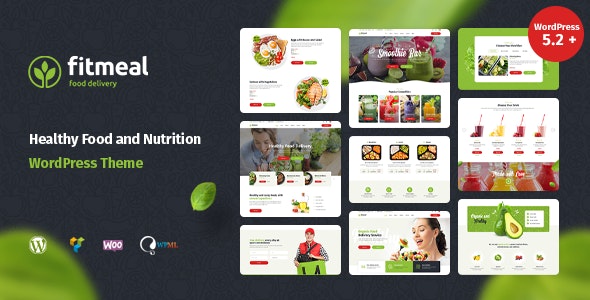
FitLine — Online Fitness Coach WordPress Theme

Dietitian – Nutrition Health Professionals WordPress Theme

Rosaleen – Health Coach, Speaker & Motivation WordPress Theme


Mar 3, 2024 | Passive Income, Small Business Ideas
The craft industry is going through an amazing transformation!
It’s no longer just a creative hobby, but a thriving and profitable business opportunity.
This guide is here to inspire and empower people from all walks of life.
Whether you’re a student looking to make some extra cash or a creative young adult, we want to help you turn your crafting passion into a sustainable and financially rewarding venture.
Crafting is such an amazing way to find both financial independence and creative fulfillment!
With the right knowledge and dedication, you can achieve so much in the crafting world.
We’ll explore all the wonderful benefits of starting your own craft business and share a wide range of popular craft niche ideas to inspire your creativity.
Plus, we’ll equip you with essential knowledge and tools to make sure your venture becomes a profitable endeavor. Let’s get started!
Why should you think about making money from crafting? There are some really good reasons
- Being Creative: Crafting lets you be creative and make cool stuff with your hands.
- Flexible Schedule: If you sell crafts, you can decide when and where you want to work.
- Not Too Expensive to Start: Unlike some businesses, you don’t need a lot of money to start crafting for profit.
- Lots of People Want Your Stuff: People like things that are handmade and special, so they’re willing to pay more for them.
- Learning and Growing: Running a craft business can help you get better at business stuff and learn new skills. It’s good for your personal growth
Before you start making money with crafting, it’s a good idea to choose a specific area or “niche” for your craft business.
Choosing the right niche should align with your interests, skills, and target audience. Keep in mind that within each of these niches, there’s room for specialization and creativity. By focusing on what you’re passionate about and what appeals to your potential customers, you can set the stage for a successful craft business.
Here are some popular craft ideas to think about:
Handmade Jewelry: This means creating beautiful necklaces, bracelets, and earrings by hand. You can make jewelry that lots of people will like.
Home Decor: You can craft special things to decorate people’s homes. For example, you could paint ceramics, make custom candles, or create unique wooden wall art.
Apparel and Accessories: If you like fashion, you can design your own clothes or make special bags. You can also knit cozy scarves or create other stylish accessories.
Personalized Gifts: These are gifts that are made just for one person. You can craft things like mugs with someone’s name on them, photo albums with their pictures, or cutting boards with engraved designs.
DIY Crafts for Kids: If you’re good at making fun and educational craft projects for kids, this can be a great niche. Kids love doing creative things, so you can make craft kits for them to enjoy.
To succeed in the craft business, it’s essential to continually enhance your skills.
Learning is a journey, and it’s okay to start with courses that match your current skill level and gradually work your way up to more advanced topics.
By continuously improving your craft skills, you’ll be better equipped to create beautiful, high-quality products that will attract customers to your craft business
Online Courses for Crafting Skills:
- You can learn a lot from online courses. These are like classes on the internet that you can take from home.
- Websites like Coursera and Udemy offer a wide variety of courses. These courses can teach you advanced crafting skills, like making complicated knitting patterns or designing unique jewelry.
- For example, you can find a course on “Advanced Knitting Techniques” on Coursera. This course can help you learn fancy knitting stitches and patterns to make your creations more impressive. Coursera Advanced Knitting Techniques
- If you’re into making jewelry, you might want to explore a course like “Jewelry Design and Creation” on Udemy. It can teach you how to design and create beautiful jewelry pieces that stand out. Udemy Jewelry Design and Creation
- Courses on “Entrepreneurship” are also valuable. These can teach you how to run your craft business effectively. Understanding things like pricing, marketing, and managing your finances is crucial. Coursera Entrepreneurship Courses
Investing in Your Craft Education:
- Think of these courses as investments in your crafting skills. The more you learn, the better your crafts will become.
- Learning new techniques can help you create unique and high-quality products that customers will love.
- Crafting is an art, and like any art, it can be improved with practice and learning from experts
Staying Competitive:
- In the craft business, there’s often a lot of competition. Taking these courses can help you stand out and offer something special.
- Customers appreciate well-crafted and distinctive items, so investing in your skills can help your business succeed.
having the right crafting supplies and tools is essential for creating high-quality crafts.
Researching your craft, investing in quality materials, and staying organized will help you craft like a pro and produce beautiful, long-lasting creations that you can be proud of.
Quality Materials Matter:
- Imagine you’re making a beautiful necklace. To make it special, you need the best quality beads and wires. The same goes for any craft you choose.
- If you’re into making clothes, using premium fabrics can make your creations look and feel better. It’s like using high-quality ingredients in a recipe.
- For painters and artists, having the right paints and brushes can help you create stunning artwork.
Research Your Craft:
- Before you start buying supplies, it’s a good idea to research what materials are commonly used in your chosen craft.
- You can find this information in books, online tutorials, or by talking to experienced crafters.
- Knowing what’s best for your craft will help you make informed choices when shopping for supplies.
Invest Wisely:
- Good-quality materials might cost a bit more, but they’re worth it. They’ll help you create better, longer-lasting crafts.
- Think of it like buying a durable tool that lasts a long time instead of a cheap one that breaks quickly
Tools of the Trade:
- Besides materials, you’ll also need tools specific to your craft. For example, if you’re a jewelry maker, you’ll need pliers and wire cutters.
- Make a list of the tools you need and gradually acquire them as you go along in your crafting journey.
Organize Your Supplies:
- Keeping your crafting supplies organized is important. It makes your workspace more efficient, and you won’t waste time searching for things.
- You can use boxes, bins, or shelves to keep everything tidy.
Safety First:
- Some crafts involve tools and materials that can be sharp or hot. Make sure to learn how to use them safely to avoid accidents.
In the next parts of this guide,
We’ll help you figure out who wants to buy your crafts and make a plan for your business.
We’ll also talk about the legal stuff, setting up your crafting space, making lots of crafts to sell, and how to be on the internet so people can see and buy your crafts.
We’ll give you easy tips to turn your crafting dreams into a business that makes money and brings you happiness
We’ll go through each important step.
Market Research
Start by talking to potential customers and looking at what other craft businesses are doing.
Understand what people like and what they’re willing to pay for. This helps you create crafts that have a demand.
Business Plan
Your business plan is like a roadmap.
It should include details about the kinds of crafts you’ll make (your niche), how much you’ll charge for them, and how you’ll let people know about your crafts (your marketing plan).
Planning these things out helps you stay on track.
Legalities
To make your craft business official, you may need to register it with the government, get a business license, or comply with specific local regulations.
This step ensures you’re running a legitimate business.
Crafting Space
Your crafting space should be comfortable and organized.
Make sure you have all the tools and materials you need within reach.
Having a dedicated space helps you focus and be more productive.
Build an Inventory
Creating a diverse range of crafts is essential.
Make a list of what you’ll offer, and start crafting.
Having enough inventory ensures you can meet customer demands and have items to sell at craft fairs or online.
Online Presence
Your website is like your online store.
It’s where people can see pictures of your crafts, learn about you and your business, and even purchase items.
You can use website-building services or hire a web developer if you’re not tech-savvy.
Marketing Strategy
Think about how you’ll tell people about your crafts.
Social media, craft fairs, and online marketplaces are great places to start. You can also consider email marketing and collaborations with other crafters to expand your reach.
Finances
Keep track of your expenses and income.
This helps you understand if your craft business is making a profit.
Consider setting up a separate bank account for your business to keep your personal and business finances separate.
Customer Service
Treat your customers well.
Respond to their questions and feedback promptly.
Happy customers are more likely to return and recommend your crafts to others.
Adapt and Grow
The craft business can change, so be ready to adapt.
Pay attention to customer preferences and market trends.
Adjust your crafting and marketing strategies accordingly to stay competitive and successful.
Pricing your handmade crafts is a crucial part of your craft business. To get it right, you need to consider a few things. First, make sure you know how much it costs you to make each craft. This includes the materials you use, the time you spend making it, and any other expenses like rent or electricity.
Next, think about how much extra money you want to make, which is your profit. This is what’s left after you cover all your costs.
It’s also a good idea to look at what other people are charging for similar crafts in the market. This can give you an idea of what customers are willing to pay.
Ultimately, your goal is to price your crafts competitively. Not too high that people won’t buy, and not too low that you don’t make a profit. Finding the right balance ensures you cover your expenses and still make money from your craft business.
Selling your crafts online is a game-changer.
Consider these options
Your Own Website
When you have your own website, you have full control over your brand and sales.
You can create a professional site using platforms like WordPress, Shopify, or Wix.
If you’d like assistance with web development, you can explore our web development service for help in creating a customized website that suits your craft business.
Etsy
Etsy is a widely recognized online marketplace known for its handmade and unique products.
It’s user-friendly and attracts a large audience of buyers looking for handcrafted items. Sample Link – Etsy Seller
Themes and Templates
To make your website look even more appealing and user-friendly, you can explore various themes and templates.
These can help enhance the design and functionality of your website.
You can find a variety of options through affiliate links.
Staying in the loop with crafting trends is your secret weapon.
Right now, many people are loving crafts that are kind to the Earth, like using eco-friendly materials.
And people really adore stuff that’s special and made just for them.
But here’s the real magic:
You’ve got to keep trying new things, experimenting, and being open to change.
In conclusion, crafting isn’t just a fun hobby – it’s a journey to being your own boss and having the freedom to make money doing what you love.
So, don’t hold back.
Learn about the crafting world, find your own style, and use smart strategies.
Your crafty dream can turn into a successful business adventure.
It all begins with that first step, so let your creativity shine, and start building your crafting empire today!
WordPress Themes for crafting Business
Crafts & Arts – Handmade Artist WordPress

KraftiArt – Furniture, Art & Crafts – WooCommerce Responsive Theme

Krafti – Arts & Crafts WordPress Theme

Mintie – Arts & Crafts WooCommerce Theme

Manufactura – Handmade Crafts, Artisan, Artist WordPress Theme


Mar 3, 2024 | Passive Income, Small Business Ideas
Are you eager to make a meaningful impact in the world of business coaching?
If so, you’re on the right track.
This comprehensive guide will take you step by step through the process of becoming a highly successful business coach.
Get ready to unlock the full potential of your entrepreneurial spirit while helping others do the same.
Understanding the role of a business coach
Before we get into the details, let’s clarify what it means to be a business coach.
Think of yourself as a guide, mentor, and cheerleader for people who want to succeed in business.
Your job is to give them useful advice, show them the way forward, and give them practical tools they can use. You’re like a coach in sports, but for business.
You help them see their business from different angles and come up with new ideas. You boost their confidence, help them bounce back from setbacks, and encourage them to keep learning and growing.
In simple terms, you’re there to help them become the best business owners they can be.
The Transformative Power of Mentorship
Mentorship is the cornerstone of entrepreneurial success.
Consider this: one-third of thriving entrepreneurs attribute their achievements to mentorship or support groups.
Furthermore, 33% of top-performing founders credit their success to the guidance of accomplished entrepreneurs.
A staggering 92% of small business owners acknowledge the profound impact mentors have on their growth and overall business survival.
Going Beyond Traditional Mentorship
While traditional mentorship is undoubtedly beneficial, the role of a business coach goes even further.
A mentor may offer sporadic support without a structured schedule.
In contrast, a business coach provides a more hands-on and structured approach, usually on a paid basis.
This level of engagement and commitment sets business coaching apart.
Qualifications for business coaching
Now, let’s talk about what it takes to become a respected business coach.
To be great at this job, you need a strong background as an entrepreneur or business owner. But here’s the thing: Your experience must directly relate to what you want to teach others.
For instance, if you’ve successfully started a business from the ground up, you’ve got valuable knowledge to share with budding entrepreneurs.
On the other hand, if you’ve taken a company from a small operation to a multi-million-dollar enterprise, your expertise can be a guiding light for others on the same path.
But what if you haven’t walked these paths yourself? Don’t worry! You can still become a coach by enrolling in courses that teach the skills and knowledge you need. Websites like Udemy offer various courses on entrepreneurship, leadership, and business management. Here are a few course links to get you started:
These courses can provide you with the knowledge and tools you need to kickstart your career as a business coach, even if you haven’t built a business empire yourself.
Leveraging online platforms and web development
In the digital age, a strong online presence is essential for your coaching practice.
Developing a professional website is a crucial step in establishing credibility and attracting potential clients.
Your website can serve as a central hub for sharing your expertise, showcasing client testimonials, and offering valuable resources.
If you’re new to web development or need assistance in creating an impactful coaching website, consider our web development service. Our expert team specializes in crafting websites tailored to coaches and consultants, ensuring your online presence aligns with your coaching niche.
The value of personal experience
Your personal entrepreneurial journey is your most valuable asset.
Through your own trials and triumphs, you’ve gained firsthand knowledge of the multifaceted challenges and rewards of business ownership.
This practical experience equips you with a level of insight that textbooks and theory alone cannot provide.
Coaching with expertise
A word of caution: avoid offering advice beyond the scope of your experience. Ill-informed coaching can lead to short-term gains but may hinder long-term success.
It’s crucial to provide guidance and support tailored to your client’s unique journey.
Not everyone has launched their own business, and that’s perfectly acceptable.
We understand that not everyone has embarked on the journey of starting their own business, and that’s absolutely fine. Your path to becoming a business coach doesn’t solely depend on being a business owner.
If you haven’t initiated a business venture but are an expert in a specific field, you can still make a substantial impact.
Here’s the key: identify your strengths and areas of expertise. Perhaps you’re a marketing maven, a productivity optimization pro, or a confidence-building champion. These skills are incredibly valuable and can form the foundation of your coaching practice.
For instance:
- Marketing Prowess: If you have a deep understanding of digital marketing, you can coach entrepreneurs on how to create effective online marketing strategies, build a strong online presence, and reach their target audience.
- Productivity Optimization: Are you a master of time management and productivity? You can guide business professionals on how to streamline their work processes, increase efficiency, and achieve more in less time.
- Confidence Building: If you excel at boosting confidence and self-belief, you can help individuals overcome self-doubt, fear of failure, and imposter syndrome, empowering them to pursue their business goals with conviction.
The key is to leverage your expertise and use it as a cornerstone for your coaching practice. Your unique skills can be incredibly valuable to aspiring entrepreneurs and business owners, helping them overcome challenges and achieve success in their respective fields.
Dispelling the Money-Making Myth
One prevalent myth in the coaching world is that you can only coach people on how to make money.
This couldn’t be further from the truth. Here are just a few examples of non-profit-oriented industries where clients can achieve six to seven figures with your guidance:
- Confidence-building
- Leadership development
- Mindset mastery
- Health and wellness
- Organizational excellence
- Beauty and fashion
The truth is, anyone who claims that only certain products or industries can generate income lacks the creativity to craft compelling offers or effectively market them.
Do you need a business coach certification?
Certification is often seen as a way to enhance your credibility as a business coach.
While it can be valuable, especially for establishing trust with potential clients, it is by no means a requirement.
You can gain practical experience by initially offering coaching services at lower rates.
This approach benefits both you and your early clients, allowing you to refine your coaching skills while offering affordable services.
Diversifying Revenue Streams
How do business coaches generate income?
It typically begins with one-on-one coaching, where you provide personalized guidance to individual clients.
As your coaching practice grows, you can expand into group coaching, allowing you to assist multiple clients simultaneously.
Eventually, you can explore the world of online courses, which offer scalability and a wider reach.
However, it’s advisable to start with coaching services to develop your teaching skills.
Is there a demand for business coaches?
Absolutely! Coaching is a thriving billion-dollar industry, and the demand for business coaches is on the rise. Consider these compelling statistics:
- Every month, there are approximately 1.5 million online searches for business coaches, life coaches, and executive coaches.
- A significant portion of the population, including 34% of Americans, has side gigs.
- Among millennials, 50% have side businesses, while 70% of Gen Z individuals are exploring side ventures.
These figures underscore the increasing interest in entrepreneurship and the growing need for expert guidance.
Your Path to Business Coaching Success
Let’s get practical. How do you embark on your journey to become a business coach without a formal degree?
It’s a three-step process:
Identify your niche.
Grow your audience and craft your coaching offer.
Find your niche
Your niche is your unique area of expertise, and it should align with your personal experience.
Whether you excel at launching startups, optimizing small businesses, or empowering female entrepreneurs, your niche should reflect your strengths and passions.
Create your coaching offer.
Define your coaching services clearly.
Clients should have a precise understanding of what they can expect to gain from working with you.
Specify tangible results that are achievable within a reasonable timeframe. This clarity benefits both you and your clients.
Grow Your Audience
To expand your reach and connect with a broader audience, consider using various strategies.
These can include engaging with people on social media, writing guest blog posts for popular websites, appearing as a guest on podcasts, and using email marketing.
Don’t forget to promote your online course and book as part of your outreach efforts.
These resources can be powerful tools to attract people to your coaching services. Plus, they give you extra credibility as an expert in your field.
Building an email list is a smart move, especially when you want a direct way to communicate with potential clients.
This list can include people who are interested in your coaching, those who have taken your online course, or readers of your book. It’s a valuable asset for growing your coaching business.
Scaling your coaching business
As your client base expands, consider scaling your coaching practice.
Group coaching is an effective way to serve multiple clients simultaneously.
You can choose between intimate, high-end groups or larger groups combined with a self-study course, depending on your goals.
Becoming a stellar coach
Effectiveness as a business coach goes beyond expertise; it’s about guidance and support.
Strive to be a coach-consultant—part coach, part consultant.
Offer valuable insights and solutions, but empower your clients to take ownership of their businesses.
Mapping Coaching Sessions
Ensure your coaching sessions have structure and purpose while remaining adaptable.
Clients should always have a clear objective for each session.
Outline the key topics you intend to cover, even if you don’t address all of them during a session.
This ensures you have a backup plan and keeps the sessions focused.
Your journey begins now
Congratulations!
You are now well-equipped to embark on your path to becoming a thriving business coach.
Keep learning, growing, and inspiring others to navigate the challenges and triumphs of entrepreneurship.
Are you ready to take the next step in your coaching journey by building a professional website to showcase your expertise?
We specialize in crafting websites tailored to coaches and consultants. Contact us today to learn more about our web development services and kickstart your online presence.
Your coaching success story begins with a powerful website!
So, what type of coaching business are you planning to start?
Share your thoughts in the comments below, and let your coaching journey commence!
WordPress Themes for Business Coach Themes
R.Cole | Life & Business Coach Theme

Coaching – Life And Business Coach WordPress Theme

PJ | Life & Business Coaching WordPress Theme

Xcoach – Life And Business Coach WordPress Theme

Business Consulting – WordPress Theme for Personal Coaching, Motivation and Training
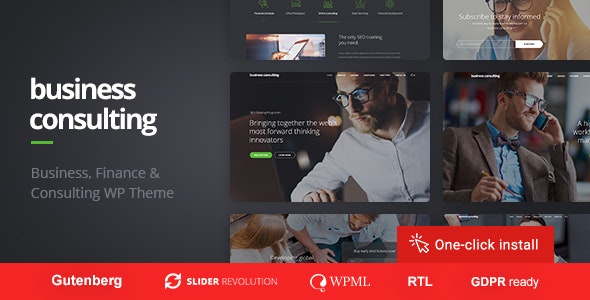

Mar 3, 2024 | Freelancing, Small Business Ideas
Are you eager to turn your love for writing into a thriving opportunity?
Well, the digital world is filled with possibilities, and blogging is your gateway to an exciting journey.
It’s about more than just expressing your thoughts; it’s a chance to create an active online presence, connect with a global audience, and generate income while doing what you love.
Discover how to turn your passion for writing into a profitable venture with these 5 proven strategies, 10 traffic-boosting tactics, and 3 lucrative ad networks.
5 Tips for Starting a Successful Blog
Find Your Niche: Uncover Your Passion
Selecting the right niche is the foundational step in your blogging journey.
It’s not just about any topic; it’s about discovering what truly excites you.
Think about your passions and interests. What could you write endlessly about?
This isn’t just about one-off articles; it’s about creating a long-lasting commitment.
Choose a subject that keeps your motivation high and your enthusiasm unwavering.
Research Your Audience: Know Your Readers Inside Out
To become a successful blogger, you must delve deep into the minds of your audience.
Understand their interests, pains, questions, and aspirations.
Use tools like surveys, social media interactions, and analytics to collect data.
The more you know about your readers, the better you can cater to their needs.
It’s all about creating content that resonates deeply with them.
Choose the Right Blogging Platform: Your Online Home
Your blogging platform is like your digital home.
It’s where you’ll create, share, and interact with your audience. Platforms like WordPress offer flexibility and endless customization options, making them ideal for those who want full control.
Blogger is beginner-friendly, while Wix is known for its intuitive drag-and-drop interface.
Make your choice based on your technical comfort and long-term goals.
Create High-Quality Content: Your Blog’s Foundation
Content is king in the blogging world.
Consistency is key, but never compromise on quality.
Do thorough research, cite credible sources, and present your ideas in an engaging and informative manner.
Your blog posts should offer real value to your readers. High-quality content not only attracts but also retains a loyal readership.
Establish a Unique Voice: Stand Out from the Crowd
The blogosphere is crowded, and standing out is essential.
Develop a unique writing style and personality that define you as a blogger.
Inject your personal experiences, anecdotes, and perspectives into your content.
Authenticity is magnetic. When readers connect with your unique voice, they’ll keep coming back for more.
Let’s explore five powerful ways you can transform your blog into a successful business.
Build a Professional Brand: Shine Bright
It’s time to shine!
Building a professional brand isn’t just about looking good; it’s about standing out.
Think of it as your blog’s power suit. Invest in a memorable logo, a visually captivating website design, and branding elements that make your blog unforgettable.
This isn’t just about appearances; it’s about gaining your audience’s trust and leaving a lasting impression.
Monetize Through Affiliate Marketing: Your Income Booster
Affiliate marketing is your golden ticket to financial growth.
Picture it as your blog’s money-making engine.
You get to recommend products or services you believe in through special affiliate links.
When your readers trust your recommendations and make purchases, you earn commissions.
Authenticity is your secret sauce here. Promote what you genuinely love, and your audience will follow suit, boosting your income along the way.
Offer online courses or ebooks: Share your expertise and transform lives.
Your blog isn’t just a platform; it’s a treasure trove of expertise.
Think of it as your knowledge goldmine.
Use it to create online courses or ebooks tailored to your niche.
These aren’t just resources; they’re life-changing guides for your audience.
They not only bolster your income but also cement your authority.
When you share your wisdom, you empower others and earn respect in return.
Explore Sponsored Content: Collaborate and Prosper
Sponsored content isn’t just collaboration; it’s your path to prosperity.
Imagine brands paying you to showcase their products or services.
It’s like turning your blog into a lucrative business.
Authenticity is the key here.
Always disclose sponsored content to keep your audience’s trust intact.
Select collaborations that resonate with your niche and your readers’ interests. When done right, it’s a win-win for all.
Establish a Membership Program: Reward Loyalty, Reap Rewards
Your blog’s loyal readers deserve a VIP experience.
Consider it your loyalty rewards program. Offer exclusive content, webinars, early access, or special perks to paying subscribers.
It’s more than just income; it’s a community you’re building. A membership program ensures you have a steady income stream, while your dedicated followers get an exclusive backstage pass to your world.
10 Ways to Drive Traffic to Your Blog
Are you ready to supercharge your blog’s visibility and attract eager readers?
Driving traffic to your blog is not a science. Next, we’ll explore ten dynamic ways to elevate your blog’s reach and engagement.
Search Engine Optimization (SEO): Master the Art of Visibility
SEO is your magic wand for increasing organic traffic.
Start by researching relevant keywords and seamlessly weaving them into your content.
Craft compelling meta descriptions that make readers click. Remember, when you’re easy to find on search engines, readers will flock to your blog.
Social Media Promotion: Share Your Brilliance
Social media platforms like Facebook, Twitter, and Instagram are your megaphones to the world.
Share your blog content, engage with your audience, and watch your blog’s popularity soar.
It’s not just about sharing; it’s about building a community of enthusiastic readers.
Email Marketing: The Personal Connection
Build an email list filled with eager subscribers and send them regular newsletters.
Offer them not just content but valuable insights and exclusive promotions.
Your email list is your tribe; nurture it, and it will take your blog places.
Guest Blogging: Extend Your Reach
Write guest posts for other blogs in your niche.
It’s not just about showcasing your expertise; it’s about creating backlinks to your own blog. When you collaborate, your blog becomes a recognized authority in your field.
Collaborate with Influencers: Ride the Wave
Partnering with influencers isn’t just about tapping into their followers; it’s about creating buzz.
Collaborate with influencers who resonate with your niche, and let their support elevate your blog’s visibility to new heights.
Engage in Online Communities: Be a Valued Member
Online forums and communities are your virtual playground. Participate, share your expertise, and connect with like-minded individuals.
When you contribute meaningfully and provide value, you’ll naturally direct traffic to your blog.
Use visual content to capture your audience.
Words are powerful, but visuals are captivating.
Enhance your content with eye-catching images, informative infographics, and engaging videos. Visual content not only educates but also entertains.
Comment on other blogs to build relationships
Engage with fellow bloggers by leaving insightful comments on their posts.
It’s not just about promoting yourself; it’s about building relationships and showing appreciation. Your comments serve as bridges to your blog.
Repurpose Content: Reach New Audiences
Don’t let your content gather dust. Transform your blog posts into different formats, like podcasts or videos.
Each new format reaches a fresh audience, expanding your blog’s reach exponentially.
Collaborate with Blogging Networks
Join blogging networks or tribes where bloggers share and promote each other’s content. It’s not just about you; it’s about a collective effort that benefits everyone involved.
One of the most effective ways to monetize your blog is through ad networks, and we’re about to explore some of the best options available
AdSense: Google’s Gold Standard
Google AdSense stands as a beacon for bloggers seeking ad revenue. It’s a trusted choice, displaying relevant ads on your site.
The magic happens when your visitors click on those ads, and you earn money. With AdSense, it’s about seamless integration and providing value to your readers while monetizing your blog.
Propeller Ads: Your Revenue Booster
When it comes to maximizing ad revenue, PropellerAds shines. It offers various ad formats and a robust traffic quality control system, ensuring you get the most out of your ads.
Whether it’s pop-unders, push notifications, or native banners, PropellerAds provides you with the tools to optimize your blog’s earnings.
ShoutMeLoud’s List of Ad Networks: A Treasure Trove
ShoutMeLoud, a trusted resource for bloggers, offers a comprehensive list of ad networks tailored to small publishers. This list is a treasure trove of possibilities.
Explore the options and find the ad network that aligns with your niche and audience. It’s like having a menu of monetization opportunities at your fingertips.
Where to learn blogging
If you’re new to blogging, you can start with these resources:
And if you don’t have a website yet, don’t worry. You can harness our website development service to create one effortlessly. Our step-by-step guide will lead you through the process, ensuring not only the creation of a stunning website but also your ability to generate leads effectively through your blog.
So, as we wrap up this journey into the world of blogging and its income-generating potential, remember this: blogging can be your side hustle, your passion project, and your ticket to financial independence.
Don’t wait any longer. Start today, take those first steps, and watch your blog flourish. Your passion for writing can pave the way to a more prosperous future.
Happy Blogging!
WordPress Themes for Business Coach Themes
ReDesk – Content Writing & Copywriting Theme

Crator – Content Writer & Copywriting WordPress Theme

Saldana – Copywriting & Content Marketing Services WordPress Theme































